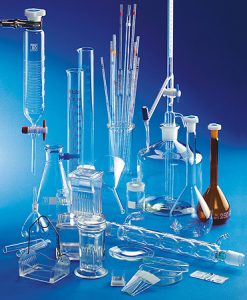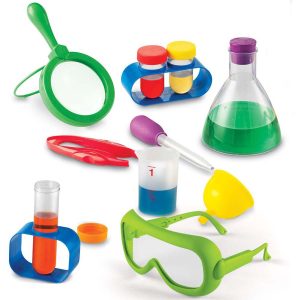Uncategorized
Trending Lab Kits for Budding Scientists
Trending Lab Kits for Budding Scientists
In 2024, the world of science education is evolving rapidly, and so is the way students engage with scientific exploration. Whether they’re budding chemists, aspiring biologists, or future engineers, students today have access to an array of innovative lab kits that allow them to dive deep into hands-on learning. From simple starter kits for younger learners to advanced sets designed for older students, these lab kits foster curiosity, critical thinking, and problem-solving skills.
In this article, we’ll explore the trending lab kits for budding scientists in 2024. These kits are designed to make science fun, educational, and accessible for students of all ages, helping them discover the wonders of the world through exciting experiments and projects.

1. Chemistry Experiment Kits
Chemistry remains one of the most exciting fields for young scientists to explore. 2024’s trending chemistry lab kits are more comprehensive than ever, offering everything from simple acid-base reactions to more advanced experiments like electrolysis and organic chemistry demonstrations.
Why They’re Trending:
- Hands-On Learning: Students can perform classic chemical experiments like making slime, creating chemical reactions, and experimenting with acids and bases.
- Safety: Modern chemistry kits are designed with safety in mind, featuring non-toxic materials and clear instructions.
- Engagement: These kits provide visual results that captivate students’ attention, such as color changes, fizzing reactions, and even small explosions.
Common Kits:
- Basic Chemistry Sets for younger students to learn about acids, bases, and simple reactions.
- Advanced Chemistry Kits that explore more complex chemical principles, including titration, electrolysis, and crystal growth.
2. Biology Dissection Kits
For students with an interest in biology, dissection kits are always a favorite. These kits allow students to explore anatomy and physiology by dissecting preserved specimens such as frogs, worms, or even fetal pigs. These kits give students a hands-on look at biological systems and structures.
Why They’re Trending:
- In-Depth Exploration: Dissecting real specimens helps students understand anatomy in a practical and detailed way.
- Educational Experience: Offers valuable learning experiences related to the structure and function of organs, muscles, and circulatory systems.
- Curriculum-Approved: Many educational programs integrate dissection kits into their biology curriculum, making them a go-to tool for in-depth learning.
Common Kits:
- Basic Dissection Kits for younger students, often including simpler specimens like frogs or earthworms.
- Advanced Kits for high school students, with more detailed specimens and instructional guides.
3. Robotics and Engineering Kits
Robotics and engineering are at the forefront of STEM education, and with the rise of artificial intelligence and automation, these fields are becoming increasingly popular. In 2024, there are a variety of robotics kits that allow students to build, program, and test robots—helping them understand the principles of engineering, coding, and mechanics.
Why They’re Trending:
- Problem-Solving: Students learn critical thinking and problem-solving skills by designing and building robots that perform specific tasks.
- STEM Integration: Combines multiple disciplines—science, technology, engineering, and math—into a single, exciting activity.
- Future-Ready Skills: Exposes students to the technology that will shape their future, including robotics, coding, and automation.
Common Kits:
- Beginner Robotics Kits for students new to coding and building, often featuring simple projects like moving robots or robotic arms.
- Advanced Robotics Kits that involve complex sensors, programming, and designing robots capable of navigating obstacles, performing tasks, or even playing games.
4. Solar and Renewable Energy Kits
As the world becomes increasingly focused on sustainability, renewable energy kits are gaining popularity. These kits teach students about solar power, wind energy, and other renewable resources by allowing them to build and experiment with models powered by these natural forces.
Why They’re Trending:
- Sustainability Focus: Offers hands-on education about sustainable energy sources and environmental conservation.
- Practical Applications: Students learn how solar panels, wind turbines, and other green technologies work, giving them a real-world perspective on renewable energy.
- Engagement: These kits include fun and interactive projects, such as building solar-powered cars or wind-powered generators.
Common Kits:
- Solar-Powered Experiment Kits for younger students, like solar-powered cars or fans.
- Advanced Energy Kits for high school students, including wind turbine models, solar-powered machines, and energy-efficient home models.
5. Earth Science and Geology Kits
Earth science remains an important subject that teaches students about geology, plate tectonics, and the Earth’s natural processes. In 2024, earth science kits are designed to help students better understand the planet through hands-on exploration of rocks, minerals, fossils, and more.
Why They’re Trending:
- Interactive Learning: Earth science kits often include rock hammers, magnifying glasses, and other tools that help students examine geological specimens up close.
- Outdoor Exploration: Some kits encourage outdoor fieldwork, helping students understand geology in a natural setting.
- Scientific Discovery: Students can learn to classify minerals, identify fossils, or simulate volcanic eruptions in a fun and educational way.
Common Kits:
- Basic Geology Kits for younger learners, featuring rock samples, magnifying glasses, and tools for identifying minerals.
- Advanced Kits for older students, including geological fieldwork tools, detailed guides, and fossil excavation kits.
6. Environmental Science Kits
As global environmental issues such as climate change and pollution continue to rise, environmental science kits are gaining popularity in classrooms and homes. These kits allow students to experiment with concepts like pollution, water filtration, and conservation.
Why They’re Trending:
- Real-World Relevance: These kits engage students with important environmental issues that affect the planet today.
- Problem-Solving Skills: Encourages students to think critically about real-world problems and solutions related to the environment.
- Hands-On Learning: Students can conduct experiments like testing water quality, measuring air pollution, or creating their own ecosystems.
Common Kits:
- Basic Environmental Kits for elementary students, including experiments that focus on water conservation, air quality, and recycling.
- Advanced Kits for high school students that allow them to simulate ecosystems, study pollution, and explore alternative energy sources.
7. Physics and Mechanical Engineering Kits
Physics is a subject that often benefits from hands-on experimentation, and in 2024, mechanical engineering kits are helping students understand the physical principles of motion, force, and energy. These kits allow students to build simple machines and conduct experiments on mechanics and energy conservation.

Why They’re Trending:
- Practical Application: Allows students to experiment with concepts like force, velocity, and acceleration.
- Hands-On Engagement: Students can create simple machines like levers, pulleys, and gears, giving them a tactile understanding of physics concepts.
- Cross-Disciplinary Learning: Combines principles from physics, engineering, and mathematics.
Common Kits:
- Basic Physics Kits that include projects such as building pulleys, levers, or a Newton’s cradle.
- Advanced Mechanical Kits for older students, which include projects like building windmills, catapults, or working models of energy systems.
8. Space Science Kits
Space exploration has long captured the imagination of students, and space science kits are a great way to bring the wonders of the universe into the classroom. These kits allow students to simulate space missions, study astronomy, and understand the physical properties of space.

Why They’re Trending:
- Excitement: Space is a captivating topic that inspires wonder and curiosity, making these kits incredibly engaging for students.
- STEM Integration: Combines elements of physics, astronomy, and engineering in projects that are both educational and fun.
- Real-World Applications: Students learn about the technology and science behind space exploration, including rockets, satellites, and telescopes.
Common Kits:
- Astronomy Kits for students to build models of the solar system or learn about planets and stars.
- Space Mission Kits that simulate launching rockets, creating solar systems, and studying the effects of gravity and space travel.
Conclusion
In 2024, there is no shortage of exciting lab kits that foster curiosity and inspire the next generation of scientists, engineers, and innovators. From chemistry and biology to robotics, environmental science, and space exploration, these trending lab kits provide students with the tools and resources they need to explore the wonders of science in a fun, educational, and hands-on way. By investing in these kits, educators and parents can support students as they develop critical thinking, problem-solving, and technical skills—preparing them for a future in STEM fields.

